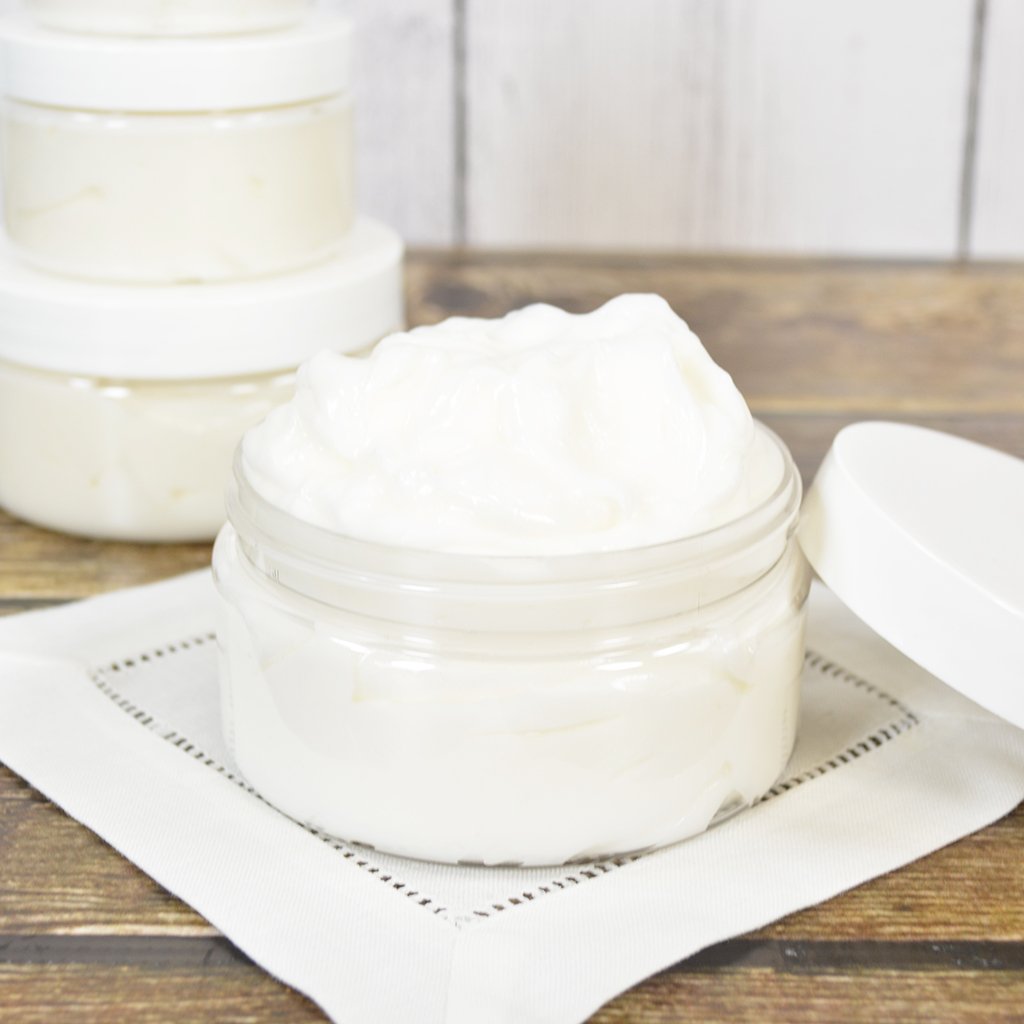Lotions: Getting StartedUpdated a year ago
Lotion is created by combining oils and water with an emulsifier.

The great thing about creating a lotion recipe is that you can customize it to be the texture you love and you can control the ingredients added. It can be tricky to know how much water, oils and emulsifiers are needed to create a stable product. A great recommendation when first starting out is to use a tried-and-true recipe to get a feel for the process before starting with your own recipe. This is so that you can get a grasp of the basics before being the often long process of creating your own unique formulation.
The first thing to understand when making your own lotion is the basic ingredients. Usually the main ingredient of a lotion recipe is water. Water typically makes up about 70-80% of a lotion recipe. Using more water results in a thinner and lighter lotion. The texture of your lotion will depend on the proportions of each ingredient and the type of emulsifier and oils. In addition to water, below you will find a list of basic ingredients you will need to create your lotion.
Oils and Butters
Typically used around 10-25% of the recipe. Using a larger percentage of oils and butters in the recipe will usually result in a thicker heavier lotion. The type of oil and butter used also plays a huge role in the lotion texture. For example, adding a lightweight oil like sweet almond oil gives lotion very different properties than adding cocoa butter.
Emulsifiers
Oil and water don't mix well, so in order to get them to come together into a stable product, you will need some sort of emulsifier or emulsifying wax. Emulsifiers are typically used around 10% or less in a lotion recipe. An emulsifier is key to creating a successful lotion. The emulsifier binds the water and oil together. The last thing you want is for the oils and water in your lotion recipe to separate. Various emulsifiers have different binding strengths and properties, so it’s important to consider which emulsifier is best for your recipe. (i.e. E-Wax or BTMS 50)
Co-Emulsifiers
In addition to emulsifiers, there is another category of products referred to as co-emulsifiers. These ingredients are not meant to emulsify oils and water on their own, but will help to stabilize an existing emulsion to prevent your product from separating. Co-emulsifiers often help to thicken products as well. A recipe does not require a co-emulsifier, but they often create a more stable and creamy product (i.e. Cetearyl Alcohol Flakes, Stearic Acid, Cetyl Alcohol Flakes).
Preservative
Be sure to add a preservative to your lotion! This step is important because lotion contains water (and usually at a very high percentage). A preservative is an anti-microbial solution that helps to prevent mold & bacteria from growing in your products. Without it your product is likely to look like a science project gone wrong. While it’s possible to make lotion without a preservative, it won’t last very long. Within weeks, you will find mold & bacteria growing in your product. If you prefer to stay away from preservatives, we would recommend creating a body butter that does not contain water, and thus does not require a preservative. Or another option is that you can always use the natural preservative line but it is important to test your shelf life if using a natural preservative as it may not hold up as long as a standard preservative.
Additional Ingredients
Special additives can enhance your formulation and make it more unique. Additional Ingredients that can be in your lotion recipe include ingredients such as extracts, additional humectants (ex: glycerin), colors and fragrance. When adding extracts be sure to check as to whether they are oil or water soluble. This will help you to determine if you should add the product to the oil phase or the water phase of your lotion. The suggested usage rate is about 3-5% of the total weight of your lotion recipe. A Vanilla Color Stabilizer may be needed if your fragrance has vanilla.
To give a hint of color, Micas and Stained Glass colors work best. Micas will add color and a sparkle/shimmer finish. They are stable in a high pH, do not migrate and do not fade with UV exposure. Stained Glass colors will create a beautiful pastel color in lotion making.
Tips
~Rosemary Oleoresin Extract, Honeyquat, and Vitamin E Tocopherol T-50 are not preservatives. They are antioxidants which will help with oxidation of oils so that it your oils do not go rancid. They do not prevent gram positive and negative bacterial or mold from growing.
~When making lotion it is important to hold your heat! By this, you should insure that your water holds at a certain temperature for 20 minutes. This can be done by heating your water to 160 to 170 °F and hold that temperature for 20 minutes. This can be done with a double boiler, or keeping your pot in a warm oven. This step will kill some of the non-endoscope (dormant, tough and non-reproductive structure produced by some bacteria) forming bacteria. When doing this step some of your water may evaporate (10% or so) so you may need to make up for the lost water.